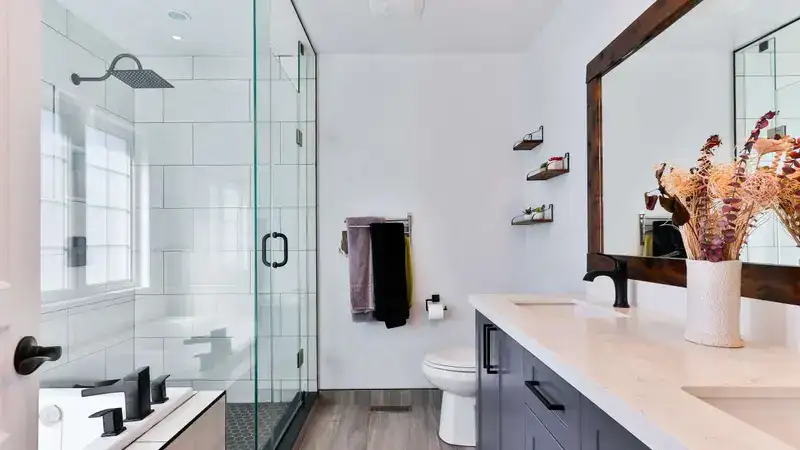Keeping your shower sealed and protected is more than just a maintenance task—it’s about creating a safe, clean, and welcoming space in your home. Choosing the right caulk can save you time, money, and frustration. This guide will walk you through everything you need to know about selecting the best caulk for showers, with easy-to-follow advice and relatable tips.
Why Is Shower Caulking So Important?
Imagine stepping into your shower to find water leaking into the walls or mold growing in the corners. Not only is it unpleasant, but it’s also a health risk. Caulking creates a watertight seal, protecting your bathroom from moisture damage and giving you peace of mind.
Types of Caulk for Showers: Breaking It Down
Choosing the best caulk for your shower depends on your specific needs. Let’s explore the main types of caulk and how they fit into your life:
1. Silicone Caulk: The Long-Lasting Hero
If durability is your top priority, silicone caulk is your go-to. It’s waterproof, flexible, and tough enough to handle steamy showers.
Why You’ll Love It:
- Lasts for years without cracking.
- Keeps mold and mildew at bay.
What to Keep in Mind:
- It’s not paintable, so the color you choose needs to match.
- Has a strong smell during application.
2. Acrylic Caulk: Easy and Versatile
For a simple, beginner-friendly option, acrylic caulk is a solid choice. It’s paintable and easy to clean.
Why It’s Great:
- Ideal for low-moisture areas.
- Blends seamlessly with bathroom decor.
What to Watch Out For:
- Not as durable in wet environments.
- Needs replacing more often.
3. Hybrid Caulk: The Best of Both Worlds
Hybrid caulk combines the flexibility of silicone with the paintability of acrylic. It’s a versatile choice for modern bathrooms.
Why It Stands Out:
- Strong, flexible, and waterproof.
- Works well in high-moisture areas.
A Small Tradeoff:
- Can be more expensive than other types.
What Makes the Best Caulk for Showers?
When choosing the right caulk, think about what matters most to you and your family:
1. Waterproof Protection
The primary job of shower caulk is to stop water in its tracks. Silicone and hybrid caulks are excellent at this.
2. Mold and Mildew Resistance
A clean shower isn’t just about aesthetics. Mold-resistant caulks help you maintain a healthier home.
3. Flexibility and Strength
Shower areas expand and contract due to temperature changes. Flexible caulk keeps the seal intact without cracking.
4. Easy Application
Look for caulk that’s easy to apply, even if you’re new to DIY projects. A smooth, consistent formula can make all the difference.
5. Compatibility with Paint
Want to customize the look? Choose a paintable caulk that matches your shower’s color scheme.
Brands You Can Trust for Shower Caulk
Here are some popular options trusted by homeowners and professionals alike:
1. GE Advanced Silicone 2
This brand is known for durability and superior mold resistance. It’s a top pick for high-moisture areas.
2. DAP Kwik Seal Plus
Perfect for beginners, DAP offers an easy-to-use formula that delivers reliable results.
3. Gorilla Waterproof Caulk
If you need something tough and versatile, Gorilla has you covered. It’s ideal for extreme conditions.
4. Loctite Polyseamseal
Loctite combines flexibility and durability, making it a favorite for both showers and tubs.
Step-by-Step: How to Apply Shower Caulk Like a Pro
Applying caulk might seem intimidating, but it’s easier than you think. Follow these simple steps:
1. Gather Your Tools
Before you start, make sure you have:
- A caulk gun
- A utility knife or scraper
- Masking tape
- Cleaning supplies
- A smoothing tool (or your finger)
2. Remove the Old Caulk
Use a utility knife or a caulk remover to scrape away the old caulk. Clean the surface thoroughly.
3. Tape the Area
Apply masking tape to the edges of the area you’ll be caulking. This ensures clean, straight lines.
4. Cut the Caulk Tube Tip
Cut the tip of the caulk tube at a 45-degree angle. Attach the tube to the caulk gun.
5. Apply the Caulk
Squeeze the gun gently and apply an even bead of caulk along the gap. Take your time to avoid messes.
6. Smooth the Caulk
Use a caulk smoothing tool or your finger to press the caulk into place. Wipe away excess as needed.
7. Let It Dry
Check the product’s label for drying time. Silicone caulks often take 24 hours to fully cure.
A little care goes a long way in keeping your caulk in great shape. Here’s how:
- Clean Regularly: Use mild cleaners to prevent soap scum and mildew buildup.
- Inspect for Damage: Check for cracks or peeling and reapply caulk if necessary.
- Ventilate Your Bathroom: Proper ventilation reduces moisture and prevents mold growth.
- Avoid Harsh Chemicals: Stick to gentle cleaning solutions to avoid damaging the caulk.
Common Questions About Shower Caulk
1. How Often Should You Replace Shower Caulk?
It depends on the type of caulk and your bathroom’s humidity. Generally, replace it every 5-10 years or when signs of damage appear.
2. Can I Use Any Caulk in My Shower?
Not all caulks are created equal. For wet areas, choose waterproof options like silicone or hybrid caulks.
3. How Long Does Caulk Take to Dry?
Drying times vary by product. Most silicone caulks take 24 hours to cure completely.
Conclusion
Choosing the best caulk for showers isn’t just about sealing gaps—it’s about creating a comfortable and safe space for you and your family. A high-quality caulk ensures your bathroom stays clean, healthy, and free from water damage. With silicone and hybrid options, you’ll get long-lasting protection that stands up to everyday wear and tear. Proper application and maintenance not only save time and effort but also enhance your shower’s appearance.
Take the time to select the right caulk and apply it with care. Whether you’re refreshing an old seal or working on a new project, the effort you invest today will pay off for years to come. Your shower deserves the best, and so do you. Start sealing your way to a fresher, safer, and more beautiful bathroom today! Visit my website for more info!

